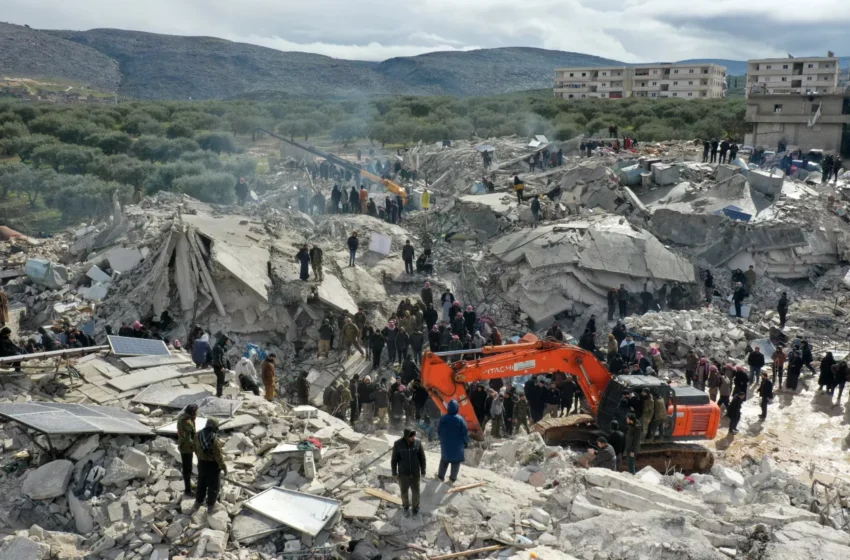
Turkiye and Syria Earthquake Losses Comprise Over Half of Global Economic Losses in Q1-2023
The devastating earthquake in Türkiye and Syria on February 6, whose economic losses were approximately $39.1 billion, drove global natural disaster losses in Q1-2023, according to Aon, the leading global professional services company.
In its report entitled “Q1 Global Catastrophe Recap April 2023,” Aon said that the preliminary estimate of global natural disaster losses was at least $63 billion. The estimate is well above the average when compared to the 21st century baseline ($53 billion) and significantly higher than the median ($38 billion), which is not skewed by the record year of 2011.
The February 6 earthquake loss estimate is based on an assessment of direct physical damage released in a rapid damage assessment report by the World Bank in late February. The final toll might eventually be significantly higher, as the entire amount of actual physical damage will likely not be settled for months to come.
In Q1-2023, global losses to private and public insurance entities ($15 billion) were currently estimated to be close to both average and median of the last 10 years. Nevertheless, potential loss development is likely to increase the total further. It was also by far the deadliest first quarter since 2010, when a destructive earthquake in Haiti resulted in approximately 160,000 fatalities.
In fact, the first quarter of 2023 was the costliest first quarter in EMEA (Europe, Middle East, and Africa) since at least 1990, when costly windstorms hit Europe and a deadly tremor impacted Iran, the report said.
Feb 6 Earthquake Deadliest Since 2010
In the early morning hours on 6 February, a violent, magnitude-7.8 earthquake struck southern Türkiye and northern Syria. This was the strongest event, yet only a beginning of a prolonged seismic sequence, which would eventually claim more than 57,000 lives and cause widespread destruction. The epicentre was in the Kahramanmaras province of Türkiye. A very strong aftershock with a magnitude of 7.5 occurred only nine hours later roughly 100 km north of the first tremor.
Large-scale damage assessments revealed that the largest volume of damage on residential, public and commercial property, as well as infrastructure and other assets, occurred in the provinces of Gaziantep, Hatay, Kahra an aras, diya an, alatya, Sanliurfa and Os aniye. In neighbouring Syria, where relief operations and international aid were severely affected by the political and military environment, Aleppo and Latakia provinces were the most affected.
Current estimates of total economic losses vary, with a governmental assessment of rebuilding costs exceeding $100 billion. When it came to actual physical damage, World Bank released a rapid damage assessment report in late February, suggesting the amount of damage in Turkey at $34 billion and Syria at $5.1 billion.
These numbers will undoubtedly evolve over the coming months. Regardless, the event is already featured in the table of top 10 costliest earthquakes on record and is by far the costliest disaster ever to occur in Türkiye. Similarly, the event claimed approximately 57,600 lives and thus became the 7th deadliest earthquake in the modern era (since 1950).
Impact on Insurance
The event resulted in substantial insured losses in Türkiye, unprecedented in the country’s history and still-evolving insurance sector, according to a report in Middle East Insurance Review.
In an earlier estimate, PERILS released a statement anticipating total market losses, including Turkish Catastrophe Insurance Pool (TCIP) pay-outs, at $3.4 billion. In April, the Insurance Association of Türkiye (TSB) estimated expected losses of the private insurance sector at $3.9 billion).
The earthquake was also game-changing in terms of the public insurance scheme facilitated by TCIP. As of April 11, the agency received more than 450,000 damage reports with total payments of $770 million, by far the highest pay-out on record.
The event prompted an increase in natural disaster coverage. Prior to the event, the region showed a take-up rate of nearly 50% for the compulsory insurance scheme, while the coverage by private insurance was estimated at 17-20%, the report said.













